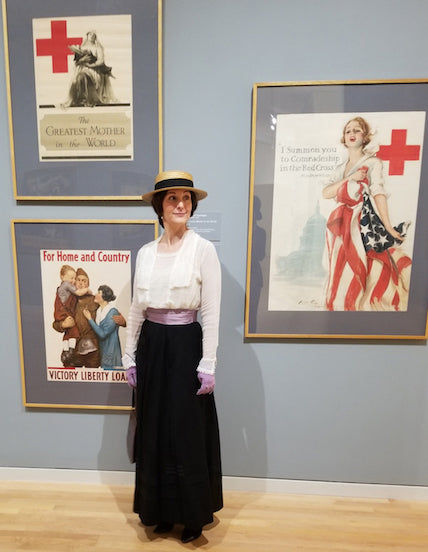
Exhibit Visit - "For Home and Country: World War I Posters"
Sarah and I paid a visit to the Georgia Museum of Art to see For Home and Country: World War I Posters from the Collection of Murray and Ann Blum. It's on exhibit through Nov. 11, 2018, the 100th anniversary of Armistice Day.
We never miss an opportunity to dress for an occasion and this one called for original 1910s garb, including my armistice blouse -- a type of pneumonia blouse ("so thin you'll catch your death") popular at the time the ceasefire agreement was signed.

The loving wife and mother, below, served as our fashion inspiration for the outing. Her softly upswept hairstyle, slightly oversized elongated jacket, and white blouse typify the sartorial style of the WWI era.
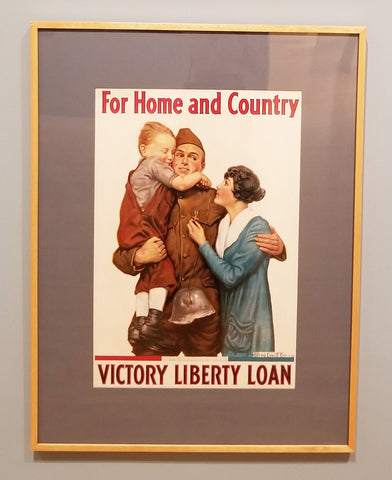 Alfred Everett Orr, USA, 1918
Alfred Everett Orr, USA, 1918
But we were there to see the art (no, really), which did not disappoint. The posters on display included large and small examples by American (that's me), British (that's Sarah), French, German, Russian, Greek, and Italian illustrators.
These artworks were created for a purpose. They were propaganda -- a word often associated with negative intent, but in fact merely indicative of a purposeful effort to persuade.
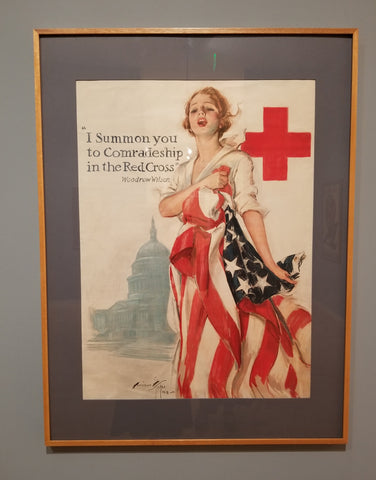 Harrison Fisher, USA, 1918
Harrison Fisher, USA, 1918
The images in these posters were meant to rouse the local populace to actively contribute to the war effort -- whether by enlisting, conserving supplies, aiding their allies, buying war bonds, or donating to relief organizations such as the Red Cross.
We found two aspects of the exhibit, taken collectively, particularly interesting:
First, it was surprisingly easy to guess the nationality of the art. Even from far enough away that we couldn't read the text, the country's "personality" always shone through.
Compare the somewhat similar scenes depicted below. Is there any doubt which is American and which is French? Pretend you're across the large room and can't read the text.
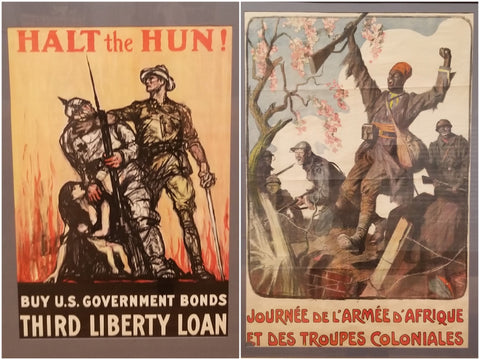
We easily tagged this lovely 1915 poster as British before we got close enough to see the thatched-roof cottages:
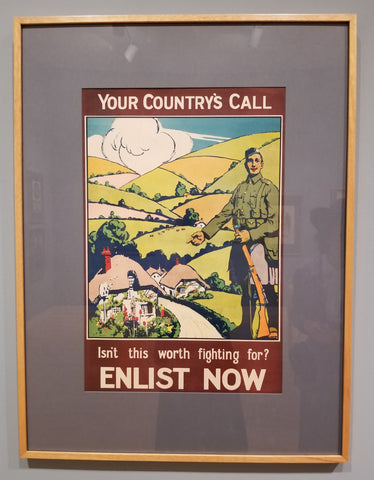
Likewise, could this pair of posters possibly look more German? The one at left resembles an advertisement for Fritz Lang's Metropolis, albeit 11 years early:
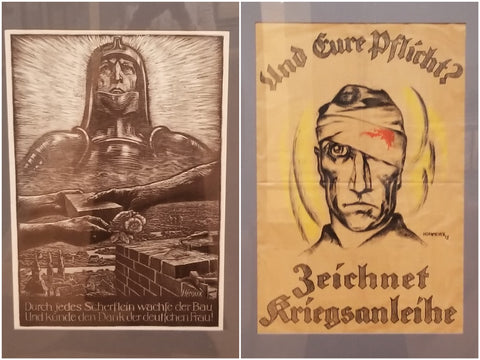
L: Bruno Héroux, 1916 R: Ferdy Horrmeyer, 1918
The second interesting aspect was the juxtaposition of styles. Art Nouveau was still evident (take another look at that French poster, above), but Art Deco was clearly working its way in. Forget which style is which and when which was? Here's a handy reference guide, unrelated to the exhibit posters. The dates shown are not hard and fast, of course. All things tend to get fuzzy at the edges:

The largest of the posters, displayed in a horizontal case, was this one by French artist Robert De Coninck, from 1916. So interesting how each soldier's uniform reflects his nationality. You can see several versions online, with slight changes made for the intended audience:
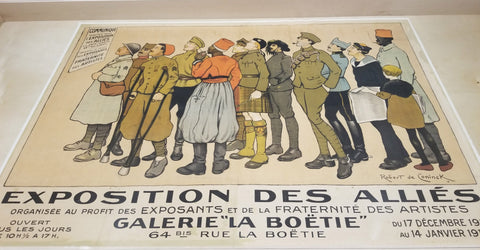
My mom says, "Tell it to the Marines!" when she doesn't quite believe (or want to hear) what's being said. And the original British phrase, from the early 1800s -- "You may tell that to the marines, but the sailors will not believe it" -- had a similar connotation. This recruitment poster, on the other hand, implies that the U.S. Marine Corps will know exactly what to do about the murderous Hun.
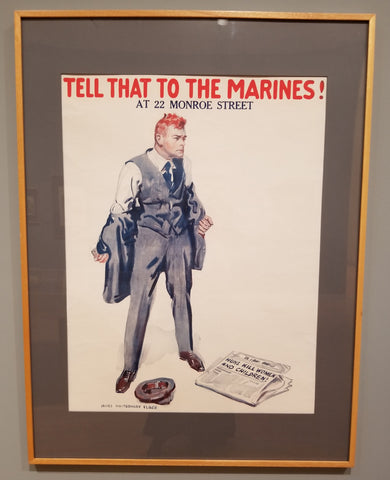
We had the gallery (and nearly the entire museum) to ourselves and had to move to another part of the building to find someone to take our picture. A shame, as admission was free and the exhibit is well worth a bit of your time and attention. No, we didn't plan the purple.
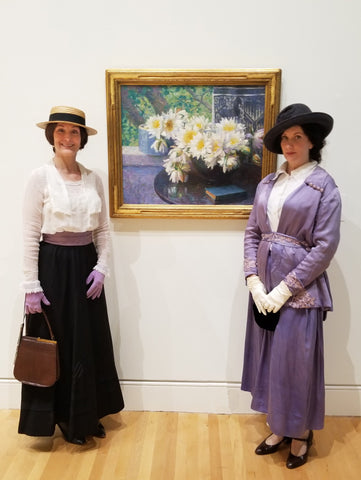

It was very hot, and our antique clothes are delicate, so we changed before antiquing in and around the rural Georgia town of Monroe. Here we are in a charming pocket park downtown. I'm trying to break into the remains of an old bank safe. No luck. See more photos from various events and adventures on the BDV Instagram.
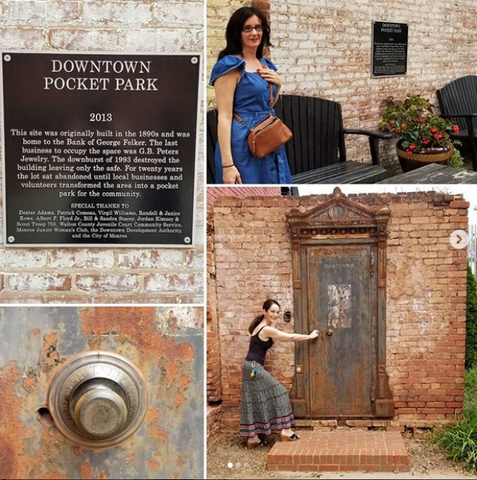

Comments
Looks like a wonderful exhibit and so nice to see you both wearing clothing of the period. That is some safe you are trying to break into there!
